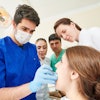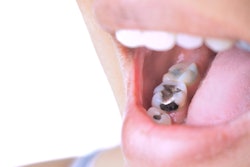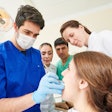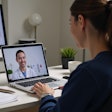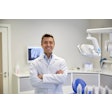2025 is right around the corner, and with it will come more positive changes in how we practice dentistry and manage our patients and practices. Many changes result in better efficiencies for our practices and affect how we communicate with our patients.
 Estela Vargas.
Estela Vargas.
We are discovering that the more intimate and unique the diagnosis and treatment recommendations are to the individual patient, the more accepted they will be. It is crucial for us, as dental professionals, to understand and relate to patient-specific information, thereby fostering a stronger connection with our patients.
We have multitudes of data on many subjects that affect the general populace, but unless we tailor it to the individual, more people will say, "But that's not my problem, because what we've tried hasn't worked."
For instance, dental plaque, or biofilm, in a patient's mouth probably means they are subject to decay and possibly developing periodontal disease. Can we be more specific for these patients by identifying their microbes? Alternatively, they can find basic information and more online or by asking Alexa or Google. We need to remain the experts.
Research has shown that many pivotal trends are redefining the patient experience, many of which are available now and many more in the future. Some of the most notable trends include the following below.
Technological progress
Patients notice and approve of the latest technology; they don't want outdated equipment and the same old speeches about their dental problems. Integrating artificial intelligence (AI) in diagnosing and treatment planning contributes to a more efficient, effective, and patient-centric approach to oral health.
AI algorithms analyze dental images, such as radiographs, computed tomography scans, and intraoral photos, to detect dental conditions more precisely. They compare these images against a vast database of cases. From there, AI can help identify abnormalities like decay, periodontal disease, growths, and tumors.
These progressive diagnostic technologies, because they improve the precision and accuracy required in creating superior prosthetic devices, may need help with initial costs, staff training, and patient education. However, the benefits of treatment personalization in promoting evidence-based decision-making and improving patient satisfaction and treatment outcomes outweigh these challenges.
Integrating digital systems like CAD/CAM and intraoral scanning to simplify the creation of precise restorations and prosthetics has been positive for patients. Factors such as the patient's dental history, oral health assessment, and individual preferences are assessed to create a customized approach. In addition, specialized treatment planning tools improve procedure predictability and enhance patient satisfaction on their road to dental health.
Personalized treatment plans
In lay terms, patients know that sugar causes plaque and that plaque causes decay. Patients can benefit significantly by understanding that many microbes and bacteria are in their mouths and that identifying which ones are present and how they might be influencing dental problems is important.
More than continuing to prescribe the usual or what works for most patients is required for many informed patients. Maybe the patient isn't convinced that placing an implant can improve their chewing ability. Perhaps they are concerned about the surgery and its safety.
What more can you show the patient that is specific to their case alone? A personalized approach includes analyzing the patient's medical history and possibly teleconferencing with the patient's primary physician to obtain a medical clearance before any invasive dental procedures are performed.
Oral cancer examinations
Patients want oral cancer exams, especially after they are educated about which population groups are at risk. More younger people, including nonsmokers, are at risk for developing oral cancers. They want to know about changes in the oral mucosa.
The oral cancer examination is integral to the patient's oral evaluation appointment. CDT Code D0120 -- Periodic oral evaluation - established patients clearly states that the dental evaluation "includes an oral cancer evaluation." The results of the review must be documented on the patient's record.
From the ADA's current data, researchers have identified that oral bacteria may be associated with a heightened risk of developing squamous cell carcinoma in the head and neck regions. In a recent podcast, I discussed the importance of regularly discussing oral cancer with patients during their evaluations.
Teledentistry
Patients also want better access to oral healthcare providers through teledentistry and virtual dentistry. These methods allow patients to receive follow-up care and have their questions answered without driving to the practice and sitting in a reception room. Teledentistry is particularly helpful to patients in areas where dentistry is a distance away, or they have medical issues that prevent travel.
This trend and remote monitoring enable dental professionals to track patient progress for dental treatments like orthodontics without requiring frequent in-office checkups. Virtual consultations also reduce the administrative burden of in-office patient visits, leading to more efficient operations. This trend allows dental professionals to maintain strong relationships with patients and ensure treatment compliance without regular in-person visits.
A survey by the ADA showed that dentists are integrating these advances into their practices and patient care protocols. Forty-nine percent of dentists plan to spend more on technology over the next two years, which is expected to have the most impact on patient communication, treatment planning, and practice management. Dental providers should continue to actively assess where technology can streamline processes and improve care within their practices.
In Part 2 of this article, we'll explore what's in store for patients and dental teams in 2025.
Editor's note: References are available upon request.
Estela Vargas, CRDH, is the founder and CEO of Remote Sourcing, a dental insurance billing and revenue recovery service. She is a graduate of Miami Dade College's dental hygiene program. Vargas' extensive background in the clinical arena of dentistry is coupled with her experience as a practice administrator and business executive.
The comments and observations expressed herein do not necessarily reflect the opinions of DrBicuspid.com, nor should they be construed as an endorsement or admonishment of any particular idea, vendor, or organization.


